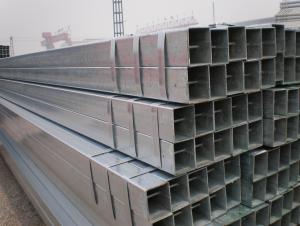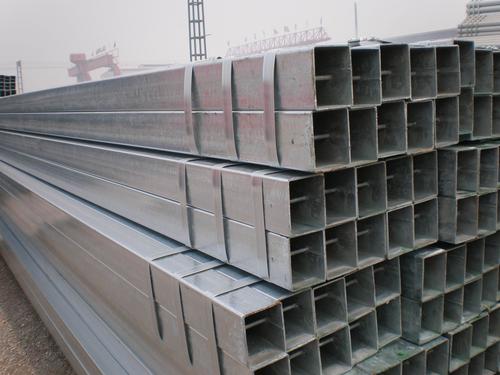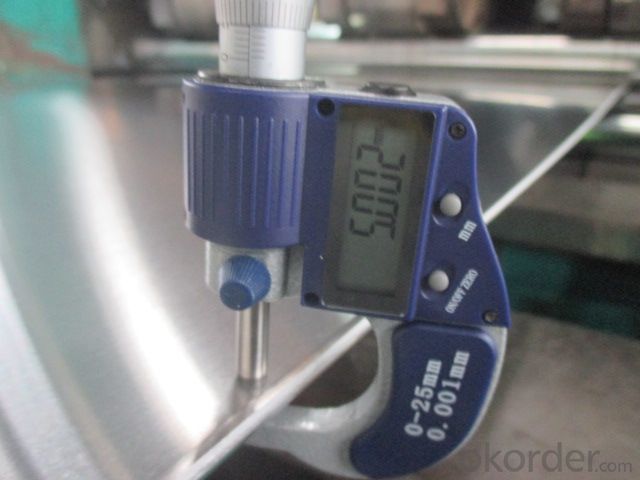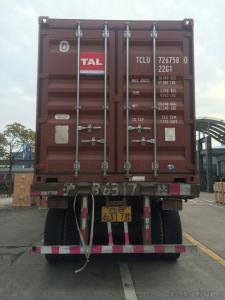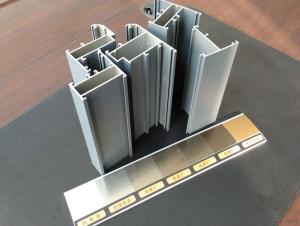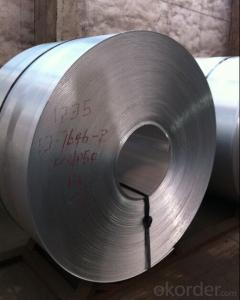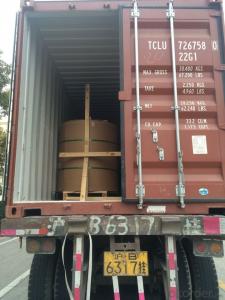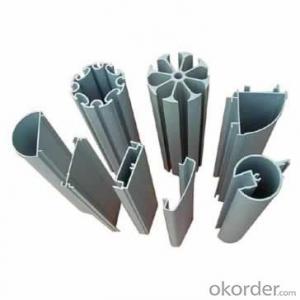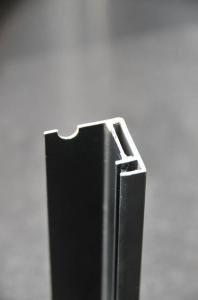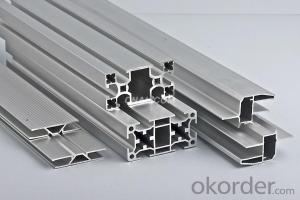Aluminum Profiles for Doors and Windows - Aluminium Sheet with Best Price Stocks Warehouse
- Loading Port:
- Shanghai
- Payment Terms:
- TT or LC
- Min Order Qty:
- 3 m.t.
- Supply Capability:
- 5000 m.t./month
OKorder Service Pledge
OKorder Financial Service
You Might Also Like
1.Structure of Product Description
Cold rolled aluminum sheet is widely used in the field of construction field and decoration field, etc.
There are many different grades, suas: 1000 and 2000 series, 3000 series, 5052,5754,5083,6061,6063,8011, etc.
The temper is include H14, H22, H24,O,F, H44,H112,H114,etc.
2. Main features of the product
a.Competitive price
b.Frist-Class Service.
c. Shortest service.
3. Image.
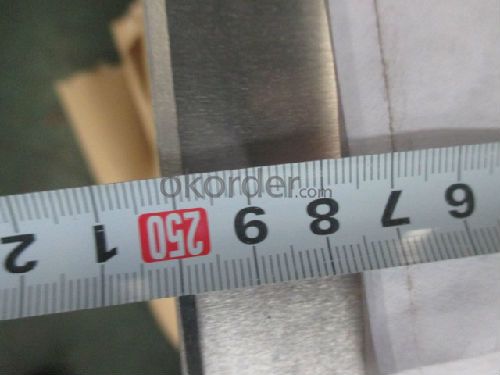
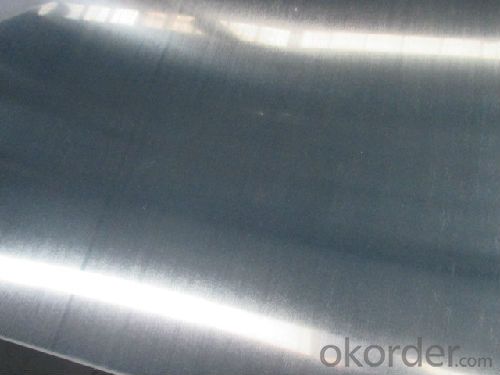
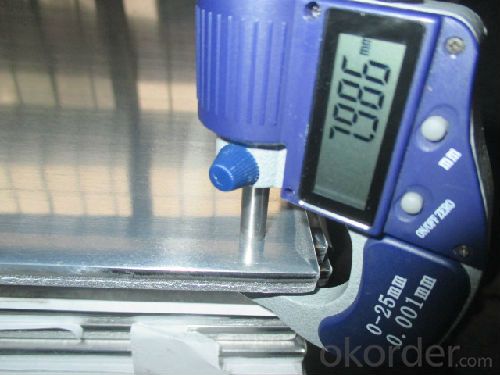
4. Product detailed sizes:
1000mm*2000mm, 1219mm*2440mm,2500mm,1500mm*3000mm, etc.
5. FAQ:
What is the quality standard?
---Usually our standard is GB3880-2006 or others.
What is the width range?
---It is from 600mm to 2500mm, etc.
---Normally it is around 9800 tons totally.
Where is your client from?
---Normally it is from Japan, USA, ENGLISH, SINGAPORE, ETC.
What is your mainly products?
---Normally they are aluminum sheet, checkered sheet, mirror finish aluminium sheet, aluminum casting coil, etc.
- Q: This question asks about the various types of aluminum profiles that are specifically used for flooring applications.
- <p>Aluminum profiles for flooring are designed to provide structural support and stability to the flooring system. Common types include: 1. T-profiles, which are used as support beams and can be easily connected to create a grid structure. 2. U-profiles, often used as edge trims or for creating a border around the flooring area. 3. H-profiles, which are suitable for heavy-duty applications and provide high load-bearing capabilities. 4. L-profiles, used for creating corners or edges in flooring systems. 5. C-profiles, which are used for covering or hiding the edges of the floor. Each type offers different benefits and is chosen based on the specific requirements of the flooring project, such as load capacity, aesthetic considerations, and ease of installation.</p>
- Q: Are aluminum profiles resistant to impact or vibration?
- Yes, aluminum profiles are generally resistant to impact and vibration due to their high strength-to-weight ratio and excellent damping properties.
- Q: What are the different machining techniques used on aluminum profiles?
- Aluminum profiles can undergo various machining techniques to meet specific requirements and alter their shape. Some commonly used techniques are as follows: 1. Milling: By employing rotary cutters, material is removed from the aluminum profile to create slots, pockets, or contours on its surface. 2. Drilling: Holes are created in the aluminum profile, often for attaching fasteners or other components. 3. Turning: The aluminum profile is rotated while a cutting tool shapes and removes material, commonly used to create cylindrical shapes or eliminate excess material. 4. Grinding: An abrasive wheel is utilized to remove material from the surface of the aluminum profile, achieving a polished finish or eliminating imperfections. 5. Bending: Applying force to the aluminum profile allows for reshaping, resulting in curved or angled profiles. 6. Tapping: Internal threads are created in the aluminum profile, facilitating the screwing of fasteners. 7. Sawing: A saw blade is used to cut through the aluminum profile, often for specific length or shape requirements. 8. Welding: Aluminum profiles can be joined together through the application of heat and pressure, enabling the creation of complex structures or the combination of different profiles. These techniques represent only a few of the possibilities for machining aluminum profiles. The choice of technique depends on project requirements and desired outcomes.
- Q: Is the aluminum profile insulated and broken hot?
- Yes, the name is not the same, the professional name is "broken hot aluminum alloy", most people used to call "broken bridge aluminum"
- Q: How do you cut aluminum profiles?
- Aluminum profiles can be cut using various methods such as sawing, shearing, or using a CNC machine. The specific method chosen depends on the type and thickness of the aluminum profile, as well as the desired precision and finish.
- Q: Can aluminum profiles be used for solar power systems?
- Yes, aluminum profiles can be used for solar power systems. Aluminum is commonly used in the construction of solar panels and mounting structures due to its lightweight, corrosion-resistant, and durable properties. It provides a stable framework for solar panels and helps to maximize their efficiency by allowing for easy installation and adjustment of the panels. Additionally, aluminum profiles have excellent thermal conductivity, which aids in dissipating heat generated by the solar panels.
- Q: How do aluminum profiles contribute to sustainable infrastructure development?
- Various ways exist in which aluminum profiles contribute significantly to the promotion of sustainable infrastructure development. To begin with, aluminum, being a lightweight material, requires less energy for transportation and installation when compared to heavier materials like steel. Consequently, this reduces greenhouse gas emissions and the overall carbon footprint associated with construction projects. In addition, aluminum profiles possess exceptional durability and corrosion resistance, enabling them to withstand harsh environmental conditions and prolong the lifespan of infrastructure projects. As a result, the frequency of repairs and replacements is reduced, leading to a decrease in waste generation and resource consumption. Moreover, aluminum is a material highly amenable to recycling, as it can be recycled infinitely without losing its original properties. This fosters a circular economy by minimizing the necessity for primary aluminum production and reducing the demand for raw materials. Additionally, the recycling process for aluminum requires significantly less energy compared to primary production, resulting in decreased energy consumption and lower emissions. Furthermore, aluminum profiles offer design flexibility and compatibility with diverse construction methods, thereby permitting the implementation of innovative and sustainable infrastructure solutions. They can be readily integrated into energy-efficient systems, such as solar panels or LED lighting, to further enhance sustainability. On the whole, the incorporation of aluminum profiles in infrastructure development contributes to the creation of a more sustainable built environment by reducing energy consumption, minimizing waste generation, promoting recycling, and enabling the implementation of energy-efficient solutions.
- Q: Are aluminum profiles resistant to termites and insects?
- Aluminum profiles possess exceptional resistance against termites and insects, unlike wood that is vulnerable to termite infestations and insect harm. Being a nonporous substance, aluminum fails to offer nourishment to these bothersome creatures. Moreover, aluminum profiles are commonly shielded with safeguarding finishes such as powder coating or anodizing, reinforcing their resistance to termites and insects. Consequently, aluminum profiles emerge as a robust and enduring alternative for a wide range of applications, including window frames, door frames, and other construction endeavors where the menace of termite or insect damage lingers.
- Q: This question asks about the various types of aluminum profiles that are utilized in the construction of exterior wall systems.
- <p>Aluminum profiles for exterior wall systems include several types: 1. <strong>Vertical and Horizontal Mullions</strong>: These are the main structural components that form the framework of the system. 2. <strong>Transoms and Muntins</strong>: These profiles divide the large glass panes into smaller sections, providing structural support and aesthetic appeal. 3. <strong>Cover Caps</strong>: Used to cover the joints and intersections of the profiles, enhancing the visual appearance and weatherproofing. 4. <strong>Sill Channels</strong>: Installed at the base of windows to direct water away from the building. 5. <strong>Head Channels</strong>: Positioned at the top of the window or door openings. 6. <strong>Jamb Liners</strong>: These are used to reinforce the sides of the openings. 7. <strong>Gaskets and Seals</strong>: Essential for weatherproofing and insulation. Each type serves a specific function in ensuring the stability, durability, and aesthetic of the exterior wall system.</p>
- Q: How do you calculate the strength of aluminum profiles?
- In order to determine the strength of aluminum profiles, there are several factors that must be taken into account. Firstly, it is necessary to gather information about the mechanical properties of the aluminum alloy being used, such as its yield strength, ultimate tensile strength, and elastic modulus. This data can be obtained from material data sheets or through testing. Next, the cross-sectional area of the aluminum profile needs to be determined. This can be achieved by measuring the profile's dimensions or referring to its specifications. Generally, the cross-sectional area is calculated by multiplying the profile's width and height. Once the cross-sectional area is known, the applied load on the profile can be calculated. This involves considering the weight or force that will be exerted on the profile. It is important to account for any potential variations or impacts, as the load can be either static or dynamic. With the load and cross-sectional area determined, the stress on the aluminum profile can be calculated using the formula: Stress = Load / Cross-sectional area. This will provide the stress value in units of force per unit area, such as N/m2 or psi. To ensure that the profile's strength is sufficient, a safety factor is typically applied. This accounts for uncertainties in the load calculations and guarantees that the profile can withstand unexpected loads or variations. The magnitude of the safety factor may vary depending on the specific application and industry standards, ranging from 1.5 to 4. By considering these factors and performing the necessary calculations, it is possible to ascertain the strength of aluminum profiles and ensure that they meet the required safety standards for their intended applications.
Send your message to us
Aluminum Profiles for Doors and Windows - Aluminium Sheet with Best Price Stocks Warehouse
- Loading Port:
- Shanghai
- Payment Terms:
- TT or LC
- Min Order Qty:
- 3 m.t.
- Supply Capability:
- 5000 m.t./month
OKorder Service Pledge
OKorder Financial Service
Similar products
Hot products
Hot Searches
Related keywords
